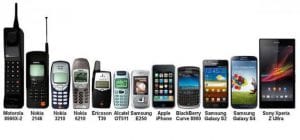The interactions we have with the people around us can be an incredibly impactful experience as we strive to improve our literacy and critical thinking skills on a daily basis. Students are constantly working to improve their thinking skills but struggle to adapt and improve new research skills as they prefer to interact with skills that they already know (Gerrity, 2018, p.455). However, during inquiry based learning, the role of the Teacher Librarian (TL) changes to encourage students to question and interact with learning activities in different settings then they’ve previously done. The school library is a great environment to view information in many ways as well as interacting with each other to enhance our learning experiences. Information Literacy (IL) and Guided Inquiry (GI) focus on constructive methods of developing new critical thinking skills. Both of these methods strive to encourage students to work together, whether it be in a classroom or a real world scenario.
There are multiple frames that source information as they all contribute towards how students can collaborate effectively when working in different teaching and learning settings across the curriculum (Bruce, Edwards & Lupton, 2006, p.3). All of these frames highlight the importance of processing information particularly as IL can be different when the learning environment changes. This environment can vary and change according to the way that students interact with IL as working in a flexible classroom setting is vastly different to completing an assessment task at home (Farrell & Badke, 2015, p.333). Many of these frames overlap as they assist in situations that require students to problem solve which is something that can be constantly improved. During those early years of school, students can be introduced to problem solving skills as they continuously challenge the learner’s thinking when faced with different learning settings, whether it be as an individual or in a group setting (Maniotes & Kuhlthau, 2014, p.14). Students are being provided with more opportunities to interact with each other and use the resources that are available to them to solve problems together. Technology is often a big contributor in this interaction as it assists in understanding how to use and improve a new skill.
The TL has several important connections to different aspects of the library environment, including the teaching and learning aspect of the school library. Challenging the way that students think is a fantastic method of inquiry based learning which can be viewed through more creative methods of teaching. The change in the physical library setting is continually demonstrating that schools are adapting more 21st Century based classrooms that can assist with enhancing students’ creativity and collaboration (FitzGerald, 2015, p.20). However, standardised testing conditions often reduce the ability to accommodate for more flexible evaluations of student learning at the end of an inquiry unit. This means that TL and CT need to be aware of how individual students learn during these flexible settings and encourage group interaction when expressing their thoughts about a particular inquiry based question. Different group activities can be beneficial for students that are continuing to harness their higher-order thinking skills particularly when focusing on a social framework (Lupton, 2012, p.16). At an early age students are able to commence interacting with these thinking skills, particularly when included in GI units.
Inquiry based learning also presents new opportunities for students to be in charge of self-directed activities that the TL can monitor when interacting with new questions. I have previously thought about different IL models and how they can be adapted to suit the needs of the TL. The Guided Inquiry Design (GID) model encourages students to work and think abstractly through eight stages of critical thinking as well as provide collaborative group based activities. However, as technology changes so does the way that students think, which forces the TL to implement new ways to question and share their research based learning with others (Maniotes & Kuhlthau, 2014, p.11). Technology has become an increasing influence in students’ lives as screens are predominantly how they view new information. The video ‘What does it mean to be literate in the 21st Century?’ was released over a decade ago and just goes to show that teachers were able to understand that technology will assist in displaying new knowledge to benefit the student’s learning. Students are reaching a stage where they are able to experiment and become more aware of how certain programs work even before the teachers do. Therefore the TL has the onerous obligation to develop new learning tasks that cater for using this technology in a way that students can become more innovative in these problem solving activities.
References:
Bruce, C., Edwards, S., & Lupton, M. (2006). Six Frames for Information literacy Education: a conceptual framework for interpreting the relationships between theory and practice. Innovation in Teaching and Learning in Information and Computer Sciences, 5(1), 1-18. doi: 10.11120/ital.2006.05010002
Farrell, R., & Badke, W. (2015). Situating information literacy in the disciplines: A practical and systematic approach for academic librarians. Reference Services Review, 43(2), 319-340. Retrieved from https://search-proquest-com.ezproxy.csu.edu.au/docview/1725782993?OpenUrlRefId=info:xri/sid:primo&accountid=10344
FitzGerald, L. (2015). Guided Inquiry in practice. Scan. 34(4), 16-27. Retrieved from https://search-informit-com-au.ezproxy.csu.edu.au/fullText;dn=211651;res=AEIPT
Gerrity, C. (2018). The New National School Library Standards: Implications for Information Literacy Instruction in Higher Education. The Journal of Academic Librarianship. 44, 455–458. Retrieved from https://www-sciencedirect-com.ezproxy.csu.edu.au/search/advanced?docId=10.1016/j.acalib.2018.05.005
Lupton, M. (2012). Inquiry skills in the Australian Curriculum. Access. 26(2), 12-18. Retrieved from https://search-informit-com-au.ezproxy.csu.edu.au/fullText;dn=584040093322031;res=IELAPA
Maniotes, L. K., & Kuhlthau, C. (2014). Making the shift. Knowledge Quest. 43(2), 8-17. Retrieved from https://search-proquest-com.ezproxy.csu.edu.au/docview/1620878836?accountid=10344&rfr_id=info%3Axri%2Fsid%3Aprimo

